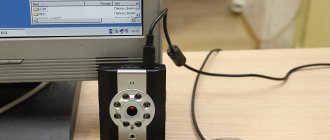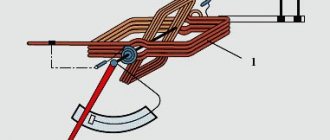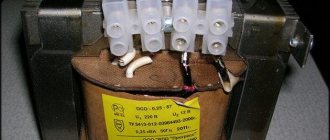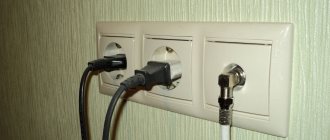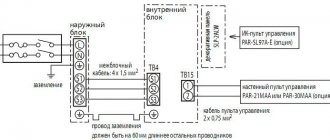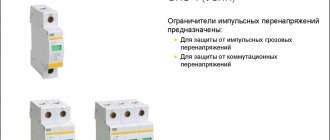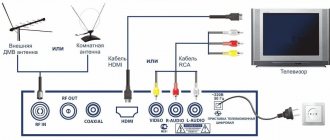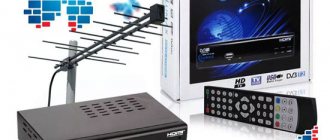According to statistics, 45% of the reasons why electrical equipment fails are power problems, so in no case should you neglect solving them.
If you have finally purchased an uninterruptible power supply (or, as it is also called, UPS), it seems that now all problems with voltage drops and power outages for the computer that will be connected to the device will definitely be solved. The main task solved by this small but extremely important electronic device is the elimination of voltage fluctuations in the network and the ability to maintain the functioning of a PC or peripheral devices connected to the network through it for a short time after even a complete and sudden blackout in the house. The ability to work fully on the device for a certain time (for some models - up to an hour) will allow you to save important changes in work documents or finish completing a level in your favorite game.
All problems will be solved, however, only after the uninterruptible power supply is correctly connected - for some reason this very moment causes great difficulties for many people who use it. Often, even from the instructions translated into Russian that come with the device, it is difficult to understand how to connect a computer without the proper level of training.
Therefore, in our short review we will talk about how to properly connect an uninterruptible power supply in order to
protect the software and hardware components of the PC from power outages. He will help him a lot with this.
Serial connection
The voltage stabilizer for a computer is turned on like this.
- You must use the power cord included in the package.
- Once connected, the battery begins to charge.
- When connecting the device, you must temporarily turn off the UPS and computer.
- If the design provides for communication lines, then they should be connected immediately.
- That's it, when the battery is charged, you can use it successfully.
Detailed instructions with images have already been given above.
Video instructions will also help
UPS connection features
In domestic practice, low-power UPSs are usually used with a single load or several loads, while more powerful models are used with a large group of loads or for centralized protection of the entire home electrical network.
The first case is the simplest: the protected equipment and network are connected to the product using a conventional plug connection (socket to plug). The main thing is to make sure in advance that the plugs and sockets fit together.
Important!
The UPS may only be plugged into an outlet that has a grounding contact!
Important!
Some devices (for example, gas boilers) require strict adherence to phasing when connecting, that is, the phase and neutral contacts of the socket coincide with the phase and neutral contacts of the plug. If, after connecting to the UPS, such a device does not start, then turn its plug over in the UPS socket.
Low-power UPSs (up to 3 kVA) have a compact body, so usually they try to be placed in close proximity to the equipment being protected. Be careful! Conditions in this area may not meet the site requirements for the device. If such a situation occurs, install the product in a more suitable area and connect it to the load using an extension cord.
Simultaneous power supply from the UPS to several consumers can be organized:
- using electrical splitters (double, tee, etc.), provided that there are few connected devices and they are located nearby;
- through the distribution panel - this option is convenient for a large number of dispersed loads.
Important!
Work on assembling and installing the distribution panel requires electrical installation skills and mandatory compliance with electrical safety rules, so we recommend entrusting them to a professional electrician!
Powerful UPSs are capable of providing redundancy for all energy-consuming systems and devices in an apartment or cottage. To do this, it is necessary to make an electrical connection to the device at the electricity input to the house, after the meter, but before the load breakers. This process is not simple and consists of several labor-intensive operations, the implementation of which is best left to a professional (especially in the case of a three-phase UPS).
It should be noted that for UPSs with powers from 6 kVA, switching with input and output circuits is carried out not through plug connectors, but through a terminal block, which again requires certain skills to work with.
Important!
The battery life of any UPS depends on the capacity and number of batteries connected to it. In domestic conditions, problems may arise with the placement of a large number of batteries. Therefore, if you need long-term backup, it is worth considering the option of using a combination of a UPS and a generator, or powering only a group of the most important loads from the UPS. In a residential building, these include electrical appliances, the functioning of which directly affects household comfort and safety.
Rules for using a connected device
The rules for successful operation are as follows:
- Charge the batteries; after purchase they are usually not charged;
- Constantly re-test the device to ensure its functionality;
- Make sure that the power of the uninterruptible power supply is maintained at the required level, do not overload it under any circumstances;
- It should not be connected to laser printers;
- If you turn off the device, you do not need to turn off the UPS.
UPS installation rules
- It is recommended to install the uninterruptible power supply in a room with a constant temperature of 18-25°C. Too high or low temperatures lead to a decrease in battery capacity and shorten the service life of the device;
- When connecting the UPS to the network, it is necessary that not only the phase, but also the neutral is broken from the power source when the protection is triggered. To do this, it is necessary to create an additional neutral bus, bypassing the automatic device or RCD. In this case, the zero from the shield must first go to the UPS, and then be distributed to consumers;
- It is necessary to ensure good ventilation of the internal components of the UPS. There should be a gap of 200-400 mm between the device and the wall/ceiling;
- Do not install the uninterruptible power supply next to water or gas pipes, under valves, or pipe connection points;
- the device must be grounded through a grounded socket or through a separate screw;
- Parallel connection of the UPS and the electrical network to the consumer is not allowed - only a serial connection must be used;
- It is prohibited to charge batteries from an external charger if the batteries are connected to an uninterruptible power supply.
When connecting the UPS to the network, it is important to first connect the PE protective conductor and neutral, and only then the phase.
FAQ
- What to do if the UPS does not turn on? — Check that its socket is suitable for the network and that the protective fuse is working properly.
- What to do if it turns off spontaneously during operation? — It’s best to immediately contact a specialist and/or replace the device under warranty. But it is possible that the problem is in your network: if the electricity stops flowing, the device will work for a while and a regular shutdown will occur.
- The UPS is clicking, is this normal? - Yes, but the sound should not be very loud, otherwise you should also consult with the service center professionals.
- How to choose the right uninterruptible power supply? - It depends not so much on what devices you plan to connect, but on what kind of electrical problems arise in your home, office or other place where you plan to use it. As a rule, this determines what degree of protection should be taken. For example, in case of unstable energy supply, the so-called. line-interactive UPS. The most efficient are online UPSs, but they are also the most expensive.
Methods for connecting the UPS to the mains
There are three main types of uninterruptible power supplies, depending on the connection scheme of the UPS to the network:
- Reserve. In normal mode, the devices provide power to the load directly from the primary power supply. If problems arise with the power supply, the UPS switches consumers to power from the batteries. This scheme has a number of disadvantages. These include a fairly long delay time between the occurrence of problems in the network and switching to an autonomous supply, as well as a low level of filtering of disturbances and interference. Therefore, a redundant uninterruptible power supply circuit is only suitable for protecting low-sensitive, non-critical equipment. It can be used, for example, for household appliances and home PCs. The advantages of the devices are low cost, low noise in normal mode, high efficiency.
- Interactive. Such uninterruptible power supplies are equipped with a step stabilizer at the output of the electrical circuit. It provides adjustment of the output voltage characteristics and filtering of high-voltage surges. Their performance is higher than that of backup UPSs, but the use of a stabilizer reduces the overall efficiency of the system. Interactive models can be used to protect household and office equipment, file servers, routers, and local area network equipment.
- Online. This option for connecting the UPS to the network uses a double conversion scheme. In normal mode, consumers are powered not directly from the mains, but through uninterruptible power supply batteries. The input AC voltage is fed to a rectifier, which converts it to DC. It charges the battery and enters the inverter, which converts the DC voltage back to AC. As a result, the consumer receives high-quality electric current with a pure sine wave, without interference or disturbance. The main advantage of an online UPS is its immediate response to a primary network outage. This allows it to be used for extremely sensitive equipment.
How to connect a UPS to a computer
The new uninterruptible power supply has instructions. It should describe how to connect the UPS to the computer. Let's look at this process using the example of APC Back-UPS ES 400/550/700 VA.
APC Back-UPS ES 400VA
After removing the UPS from the box, connect the battery. For safety reasons, APC Back-UPS are supplied with the cable disconnected from the battery; after connecting it, the device is ready for use.
To connect the battery:
- Turn the UPS over and slide off the bottom cover.
- Remove the battery and connect the black wire to the negative (-) terminal.
- Carefully place the battery back into the compartment and close the cover.
There are 8 sockets on the front (top) panel of the UPS. 4 of them - battery backup - work only when the uninterruptible power supply is turned on. In the event of a power outage, these outlets will be powered by a battery. This is where you need to connect the system unit and other equipment that should work after a sudden power outage.
The remaining 4 Surge Protection Only outlets always work, regardless of whether Vask-UPS ES is turned on. You can plug a printer, table lamp, or computer speakers into them. These outlets provide continuous protection against power surges, but they are not powered by a battery, so if the power goes out, all the devices connected through them will not work.
The uninterruptible power supply has the function of protecting one telephone line - two-wire sockets for input and output.
Models 550/700 can be connected to a computer. The 400 VA does not have such a function, and in fact it is not necessary.
Why do you need to connect the UPS to a PC via a USB connector? If the computer is always on, even when you are not at home, if the power goes out, a special program will save open files and shut down the computer.
Otherwise, the UPS will keep the computer on as long as the battery charge lasts, and then the computer will turn off as if there was a power outage.
Connecting the UPS to a computer.
Plug the UPS power cord directly into the wall outlet. According to the instructions, connecting through a filter or power socket block is unacceptable.
Plug your fax machine, desk lamp, and printer into surge-protected outlets. Plug the system unit, monitor, router and other equipment sensitive to power surges into battery backup sockets.
Turn on the UPS by pressing the ON/OFF button. A beep will sound followed by a green light indicating that the UPS is powered on and ready to use. Only then turn on the computer.
Disconnection is performed in the reverse order: first turn off the PC and only after that the uninterruptible power supply by pressing the ON/OFF button.
For sufficient battery life, the battery must be charged for 16 hours. This is a continuous process, recharging occurs from AC power, regardless of whether the UPS is turned on.
Uninterruptible power supply system diagram
Before connecting the UPS, let's look at how the equipment was connected before purchasing the UPS. Here is a simple diagram of connecting equipment to the electrical network.
Read also: Blades for pedicure machine
Three wires go to a single-phase load: phase, neutral and ground. If the load is three-phase, then there are naturally three phase wires (L1, L2, L3). The above diagram is also suitable for a three-phase network (in this case it is called a single-line diagram, i.e. a diagram in which one phase wire represents all three). Our diagram is greatly simplified - it omits very important elements: connectors (plugs, sockets, terminal blocks), fuses or automatic fuses, etc. We will return to some of these elements later.
For uninterrupted power supply, the load must be powered from the UPS, and the UPS itself must be powered from the electrical network. Therefore, you need to break the electrical circuit between the network and the load and insert the UPS into the gap. Like this:
Now is the time to try connecting your first UPS.
Where to begin
Before you start connecting the uninterruptible power supply, you need to check the battery. According to transportation rules, uninterruptible power supplies are transported with the battery disconnected, which eliminates the possibility of spontaneous activation. To connect the battery, you need to open the compartment in which the battery is stored. There you can see two connectors that need to be connected to each other.
Read also: Planer for gypsum edging
You should always start connecting an uninterruptible power supply by connecting the load. Typically, the output connectors are located on the rear panel of the UPS. The number of output connectors and their type may vary. For this reason, you need to have the necessary cables for connection in the appropriate quantity.
What can be connected to a UPS? You can connect any equipment to the UPS, except for high-power loads. This includes multifunctional devices, electric kettles, microwave ovens, vacuum cleaners, laser printers and similar equipment. If you use a multifunction printer or printer, then the UPS connection diagram to the network must include a surge protector to which the UPS and powerful load consumers are connected.
